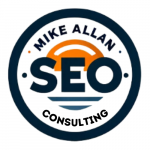One of the first elements I always correct with any client large or small is the title tag. Bringing title tags up to best practices can often generate quick and visible differences to your rankings since the terms in the title tag appear in the clickable link on the search engine results page (SERP).
According to the W3 Consortium, the <title> tag is required in all HTML documents as it defines the title of the document.
The <title> element:
- defines a title in the browser toolbar
- provides a title for the page when it is added to favorites
- displays a title for the page in search-engine results
If you omit the <title> tag, the document will not validate as HTML.
The title tag of a web page is meant to be an accurate and concise description of a page’s content. It creates value in three areas and is important for user experience and search engine optimization.
It is important to create a descriptive, keyword-laden tag to assist in increasing rankings in search engines. SEOmoz conducted a survey of 37 SEO industry leaders on the important search engine ranking factors. In this survey, 35 of the 37 participants responded that keyword usage in the title tag was the most important place to use keywords to achieve high rankings.
Title Tag Best Practices
Implementing best practices for title tags makes for low-effort, great returns on implementation. The key parts of optimization for search engine and usability goals are:
- Length – The best practice for title tags is generally to keep them between 50 and 60 characters. Google typically displays the first 50 to 60 characters in search results, so staying within this range helps ensure your full title tag is visible to users.
- Place your important keywords at the front – The closer to the front of the tag a keyword is, the more helpful it will be for ranking and the more likely a user will be to click them in search results.
- Branding – I generally recommend using your brand or company name at the end of the tag. There are also times when I have recommended placing the brand or company name at the front. The differentiating factor is how well known is the brand or company. If it is an unknown brand, and it can make a difference in click-through rates in search results, the brand name should be first. If this is not the case, the keyword should be first. DO NOT put only your company name in the title tag.
- Readability and Emotional Impact – A compelling title tag will pull in more visits from the search results. This is why in my opinion, it’s important to think about optimization and keyword usage, PLUS the entire user experience. Remember, the title tag is generally a new visitor’s first interaction with your site after they find it in the search
The perfect title tag does not exist. Test different versions to see which work best at bringing traffic to your website. You might find the “B” version doesn’t rank as well, but gets clicked on more, effectively making up the difference.
Use Textual Content as Your Guide
I write my tags after the copy on the page has been written. I prefer seeing how the copywriter integrated the keyword phrases into the content, and use this as a cue as to where to begin.
Be careful with some CMS (Content Management System) that generate the information provided elsewhere on the page. Some default to the same title tag on every page.
DO NOT use a sentence pulled from your copy verbatim. Avoid using the exact same wording that’s in your top headline, which happens a lot with WordPress. It’s much better to have a unique sentence or a compelling string of words in your title tag.
Next in the series is the importance of the description tag.


